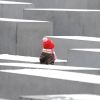Experiencing Jewish culture in Germany
Historical sites and think tanks: examples of Jewish life to discover on your next visit to Germany.
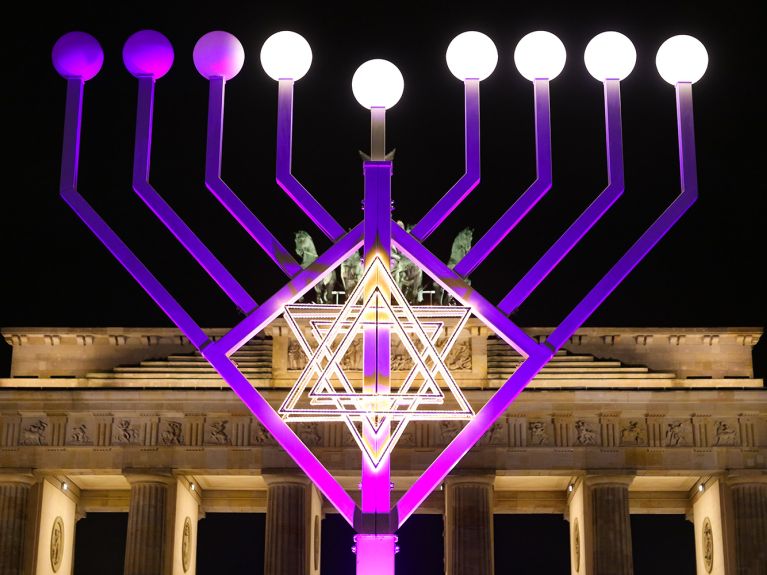
Jewish life enriches the urban landscape and social life of many German cities: historical sites, festivals, think tanks, learning labs – we offer you a small taster of Germany’s diverse Jewish culture.
Frankfurt
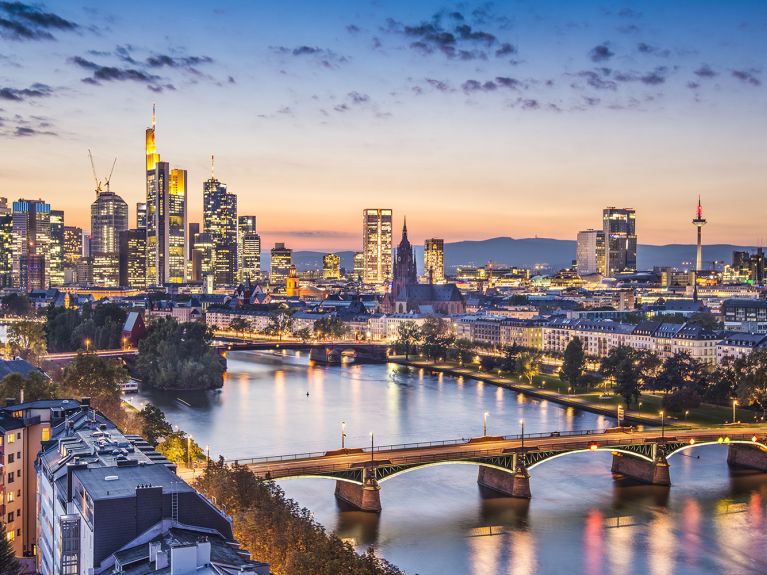
In the opinion of Hesse’s Anti-Semitism Commissioner Uwe Becker, Frankfurt am Main is Germany’s “most Jewish city”. Many institutions in today’s financial metropolis were founded by Jewish benefactors and entrepreneurs; these include for example Goethe University Frankfurt and the “Frankfurter Zeitung” that was the precursor to the “Frankfurter Allgemeine Zeitung”, which is one of the biggest national daily newspapers in Germany today. The journalist Ludwig Börne and the philosopher Theodor W. Adorno were born in Frankfurt, as was Anne Frank, who became world-famous on account of the diaries she wrote during her exile in the Netherlands. Commemorative plaques mark the house in which she was born, and the house in which she spent her childhood, in the Dornbusch district of Frankfurt. A tip for visitors to Frankfurt: an interactive modern “learning lab” at the Anne Frank Educational Center in Frankfurt tells the story of this young girl who was murdered at the Bergen-Belsen concentration camp shortly before the end of the war.
Accompany us on a tour of the Anne Frank Educational Center! Our Instagram story can be found here.
Jewish life in Frankfurt goes back hundreds of years: the first Jewish community emerged in the area around the cathedral in the twelfth century. Frankfurt’s Jews lived in a ghetto, named the Judengasse (i.e. Jews’ Lane), from the fifteenth until well into the nineteenth century. After being granted equal civil rights in 1864, they were also able to move to other parts of Frankfurt. Built in 1910, Westend Synagogue still stands as a symbol of this era. It was the only major Frankfurt synagogue to survive the period of Nazi rule. Frankfurt’s Jewish community had more than 30,000 members until 1933. But then the Nazis destroyed Jewish life in the city and murdered around 12,000 of Frankfurt’s Jews. Only 100 Jews survived the Nazi era in Frankfurt itself.
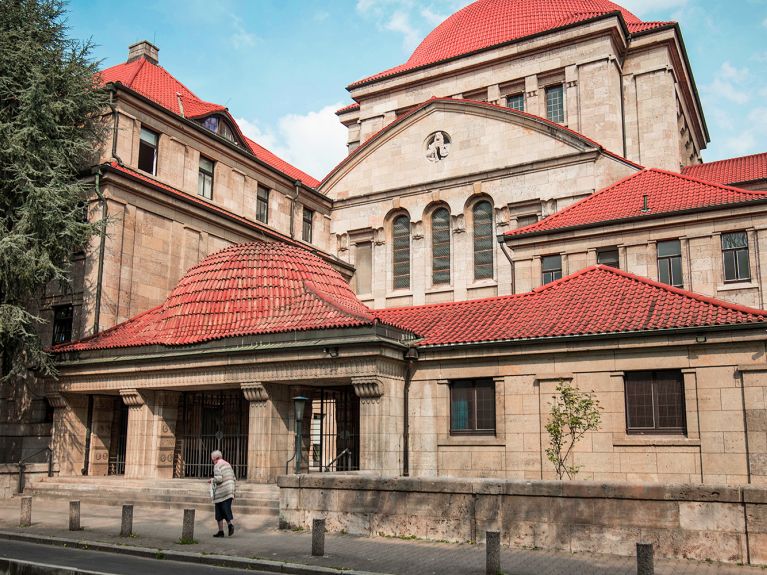
Jewish think tank of nationwide importance
Nowadays Frankfurt is home once again to one of the largest Jewish communities in Germany. A central nationwide think tank and education centre is to be established here soon: the Jewish Academy. Intended for Jews and non-Jews alike, its aim will be to promote discourse about Jewish culture among the German population, to educate and inform, and to take a proactive approach to fighting anti-Semitism. Germany’s oldest Jewish museum, the Jewish Museum in Frankfurt already offers locals and visitors the chance to engage intensively with Jewish history and culture. After five years of renovation and the addition of an extension to the Rothschild Palais, the museum will reopen on 21 October 2020. “The museum’s goal is to give people the opportunity to vividly experience Jewish culture both past and present”, says Director Mirjam Wenzel.
Leipzig
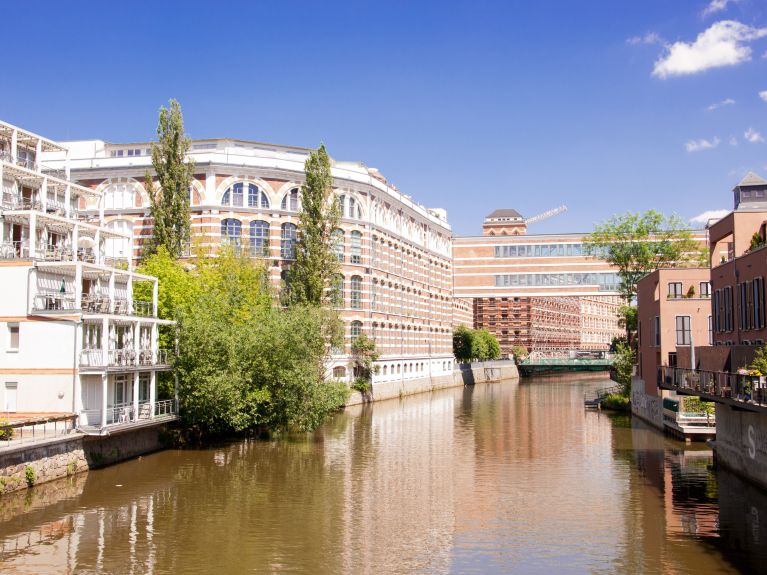
It is often said that Leipzig is the new Berlin. This city in Saxony is happening, hip and creative, and has been and continues to be shaped by Jewish life. The Jewish Week takes place here twice a year: readings, concerts, discussions with contemporary witnesses, and dance give visitors a chance to immerse themselves in Jewish life, everyday activities and religion. The festival thrives on intensive encounters, with many people from Israel, the USA, Great Britain, Chile and Australia travelling to Leipzig especially for the event.
When appointing the commissioner for Jewish life in Saxony in 2019, the state’s Prime Minister Michael Kretschmer stressed that “Jewish life is an important part of our past and present. I am delighted by the cultural diversity in Saxony with its thriving Jewish communities. Jewish life has once again become a defining aspect of our Saxon homeland.”
The traces of Jewish life date back to the Middle Ages in Leipzig, too. With 12,594 members, Leipzig’s Jewish Religious Community was Germany’s sixth-largest Jewish community in 1925. Jewish life was eradicated almost completely during the Nazi era, and no efforts were made to re-establish it during the period of SED rule in East Germany.
Jewish culture in city society
Today Leipzig’s Jewish Religious Community has roughly 1,200 members, including many immigrants from the states of the former Soviet Union. “Numerous people who came to Germany in the early 1990s have since assumed leadership positions or other responsible roles in the communities”, emphasises the Central Council of Jews in Germany on its website.
One example is Küf Kaufmann. Born in Russia in 1947, the author, director and cabaret artist lives in Leipzig. He is the chairman of the Jewish Religious Community and runs the “Ariowitsch-Haus” cultural and community centre. Hosting concerts, readings, exhibitions, lectures and seminars, the centre brings Jewish culture into city society.
Hamburg
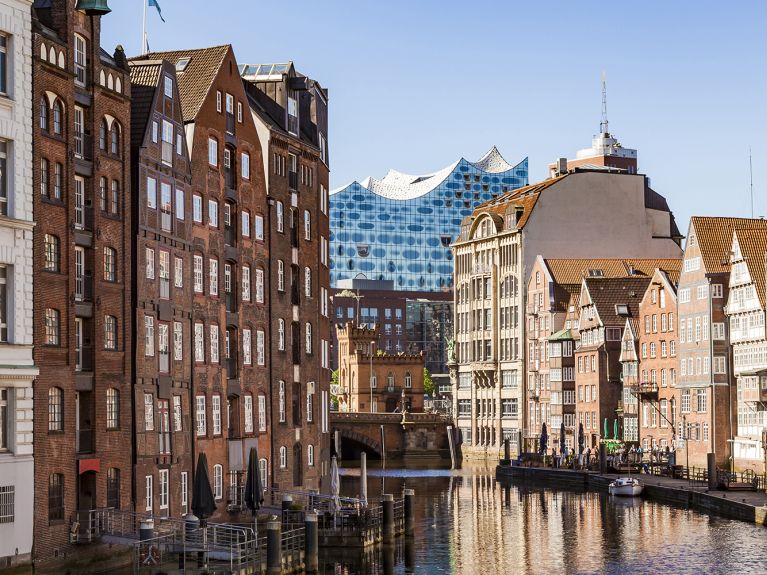
The second-largest city in Germany, one of the world‘s biggest transhipment ports, and a city state in its own right: its proud history and its self-image are reflected in its full name, the “Free and Hanseatic City of Hamburg”. Hamburg’s Jewish tradition also goes back for over 400 years.
The Warburgs were an important Hamburg family. Their better-known members include the art historian and cultural scholar Aby Warburg (1866–1929) and the bankers Max (1867–1946) and Paul Warburg (1868–1932). The Jewish family also produced some important natural scientists.
A signal to combat anti-Semitism and racism
One interesting feature of the Hamburg community is that it has practised both Orthodox and Reform Judaism in parallel since 1868. National Socialism also had a huge impact on Jews in Hamburg: most were forced to leave the country or lost their lives during the Shoah – roughly 8,000 of them were murdered in concentration camps.
Today’s Jewish community in the Hanseatic city boasts more than 2,000 members. They want to revive the longstanding Jewish tradition in Hamburg: the Hamburgische Bürgerschaft, the city state’s parliament, decided in February that the synagogue in the Grindel Quarter would be rebuilt. The first step involved commissioning a feasibility study. Built in 1906 in the neo-Romanesque style, the monumental Bornplatz synagogue was badly damaged in November 1938 and then, half a year later, was torn down completely – the Jewish community being forced to foot the bill, cynically enough. Its reconstruction is intended to send out a strong signal to combat anti-Semitism and racism.
Dieses YouTube-Video kann in einem neuen Tab abgespielt werden
YouTube öffnenThird party content
We use YouTube to embed content that may collect data about your activity. Please review the details and accept the service to see this content.
Open consent form

